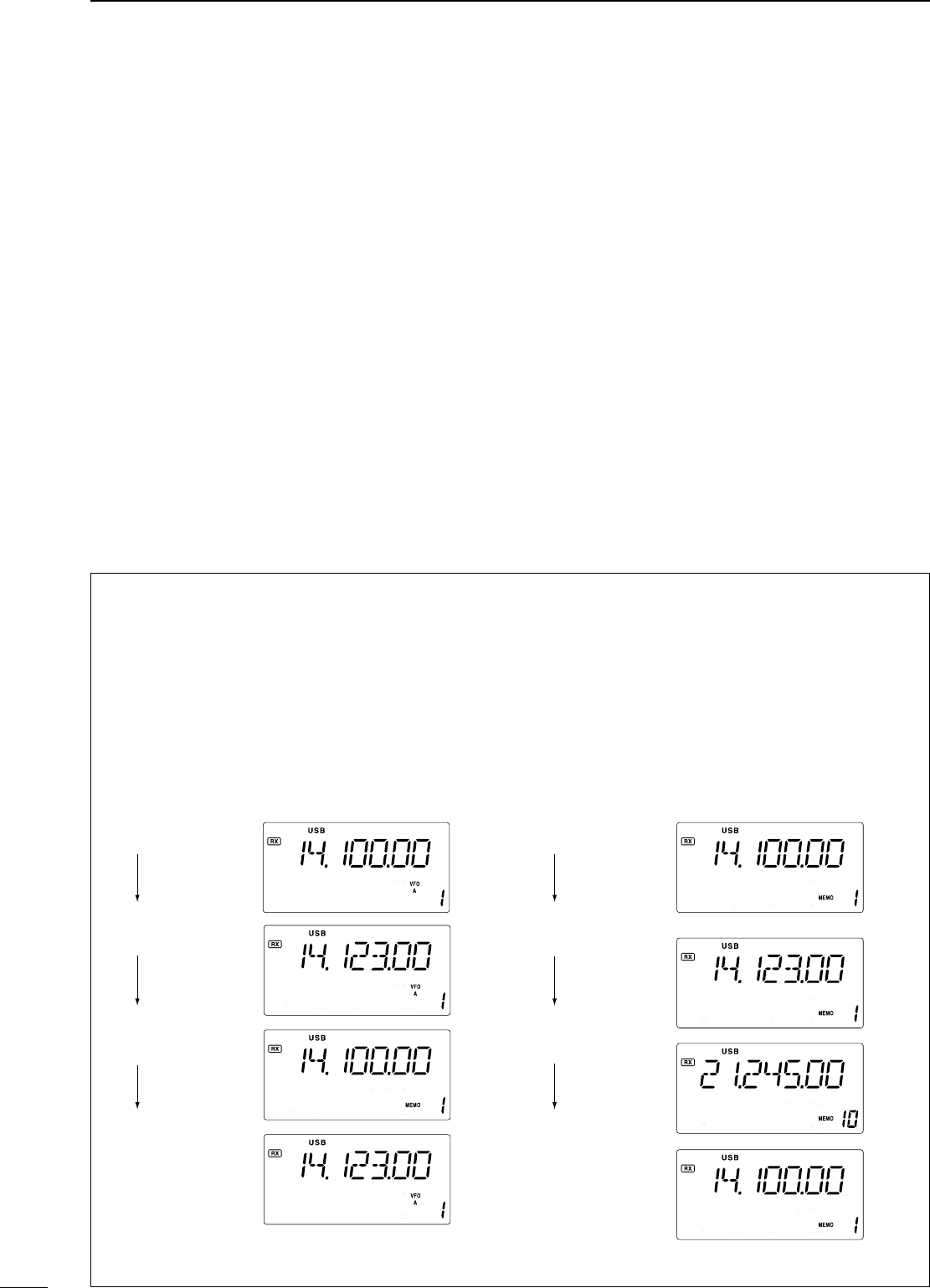
16
4
FREQUENCY SETTING
n VFO description
VFO is an abbreviation of Variable Frequency
Oscillator, and traditionally refers to an oscillator.
The IC-718 VFO can store a frequency and an
operating mode.
You can call up a desired frequency to the VFO with
the keypad or the memory transfer function (see p. 37).
You can also change the frequency with the tuning dial
and select the operating mode with the [MODE] switch
or call up previously accessed frequency and modes
with the band stacking register (p. 18).
The IC-718 has two VFOs, specially suited for split
frequency opration. The VFOs are called VFO A and
VFO B. You can call up the desired VFO.
• Differences between VFO mode and memory mode
VFO MODE
Each VFO shows a frequency and operating mode.
If the frequency or operating mode is changed, the
VFO automatically memorizes the new frequency or
new operating mode.
When the VFO is selected from another VFO
or memory mode, the last-used frequency and
operating mode for that VFO appears.
[EXAMPLE]
MEMORY MODE (pgs. 35–38)
Each memory channel shows a frequency and
operating mode like a VFO. Even if the frequency
or mode is changed, the memory channel does not
memorize the new frequency or operating mode.
When the memory channel is selected from another
memory channel or VFO mode, the memorized
frequency and operating mode appear.
[EXAMPLE]
VFO is selected.
The frequency
is changed.
Memory mode
is selected.
VFO is selected
again.
Memory channel 1
is selected.
The frequency
is changed.
Another memory
channel is selected.
Memory channel 1
is selected again.
Changed frequency (14.123 MHz) does not appear and
memorized frequency (14.100 MHz) appears instead.
Changed frequency (14.123 MHz) appears.


















